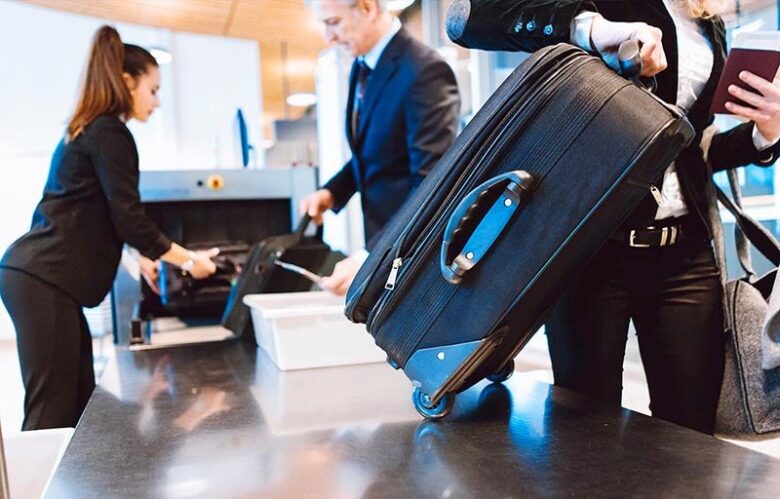Long security lines can turn an exciting trip into a stressful ordeal before you’ve even reached your gate. The good news is that with a few smart strategies, you can significantly reduce your wait time and breeze through airport security like a seasoned traveler. These practical tips will help you navigate the checkpoint efficiently, whether you’re a frequent flyer or an occasional vacationer.
Airport security doesn’t have to be the most dreaded part of your journey. By understanding what security agents are looking for and preparing accordingly, you can make the process smoother for everyone involved. The key lies in preparation, knowing the rules, and making strategic choices about what you pack and wear.
Pack Strategically
Smart packing is your first line of defense against security delays. Start by choosing a carry-on bag with multiple compartments that allow easy access to items you’ll need to remove. Place your laptop, tablet, and other electronics in easily accessible outer pockets so you can quickly retrieve them at the checkpoint.
Pack your shoes strategically too. If you’re not enrolled in TSA PreCheck, you’ll likely need to remove them, so avoid shoes with metal components, complex lacing systems, or boots that take time to unlace and remove. Slip-on shoes or sneakers with minimal metal hardware will accelerate your process significantly. Consider packing a small bin-sized bag within your carry-on that contains all the items you’ll need to remove at security. This way, you can simply pull out one organized container rather than fishing around for individual items while other passengers wait behind you.
Dress the Part
Your clothing choices can make or break your security experience. Avoid wearing metal-heavy accessories like large belt buckles, jewelry with significant metal content, or clothing with metal studs or embellishments. These items will likely trigger the metal detector, requiring additional screening time.
Choose clothes that fit perfectly but aren’t too tight or too loose. Baggy clothing may require additional pat-down screening, while overly tight clothes can make it difficult to move quickly through the process. Layers are generally fine, but be prepared to remove jackets, sweaters, or blazers. Empty all your pockets completely before approaching the metal detector. Even small items like coins, gum, or receipts can cause delays. Consider wearing pants or jackets without pockets, or use pockets that zip closed to ensure nothing falls out during the screening process.
Use TSA PreCheck or Global Entry
Enrolling in TSA PreCheck or Global Entry represents one of the best investments you can make as a traveler. These trusted traveler programs allow you to use expedited security lines and keep your shoes, belts, and light jackets on during screening. You can also leave laptops and liquids in your carry-on bag.
Even if you don’t travel frequently, the math often works in your favor. The time and stress savings usually outweigh the expense if you only take two or three trips annually. The dedicated PreCheck lines are consistently shorter and move faster than regular security lines. Remember to add your Known Traveler Number (KTN) to your airline reservations to ensure you receive PreCheck benefits. You can add this number when booking or by managing your reservation online after booking.
Be Prepared with Documents
Having your documents organized and easily accessible prevents fumbling at the checkpoint. Keep your ID and boarding pass in an easily reachable pocket or travel document holder. Consider using your phone’s mobile boarding pass feature, but always have a backup plan in case of technical issues.
Ensure your ID is current and compliant with Real ID requirements if you’re flying domestically within the United States. An expired ID or one that doesn’t meet current standards can cause significant delays and may even prevent you from flying. If you’re traveling internationally, keep your passport in excellent condition with no damage to the photo or information pages. A damaged passport can cause delays while agents verify your identity and travel authorization.
Know the Rules
Familiarize yourself with current TSA regulations before arriving at the airport. Rules can change, and staying informed helps you pack appropriately and move through security without surprises. The TSA website and mobile app provide up-to-date information about prohibited items and current procedures.
Know which foods you can and cannot bring through security. Generally, solid foods are allowed, but liquids, gels, and spreads are subject to the liquid rules. When in doubt, pack food items in your checked luggage or plan to purchase them after security. Be aware of special rules for electronics. Laptops typically need to come out of bags for separate screening, while tablets and e-readers can usually stay in your carry-on. Portable batteries and power banks must be in carry-on luggage, not checked bags.
Consider Clear Bags
Using a clear or transparent carry-on bag can expedite the screening process by allowing security agents to see contents without opening zippers or conducting manual searches. While not required, this strategy can reduce the likelihood of additional screening.
Organize items within clear bags so that electronics, liquids, and other frequently inspected items are easily visible. This transparency helps security agents quickly assess your belongings and identify any items that need additional screening. Some travelers use clear packing cubes within their regular luggage to organize different categories of items. With this method, personal belongings are kept private while still enjoying some of the advantages of clear bags.
Stay Calm and Cooperative
Your attitude and demeanor significantly impact your security experience. Approach the checkpoint with patience and respect for security personnel, who are simply doing their job to ensure everyone’s safety. A positive attitude can make the process more pleasant for everyone involved.
If you’re selected for additional screening, remain calm and cooperative. Random additional screening is normal and doesn’t indicate any wrongdoing on your part. The process will go faster if you stay relaxed and follow the agent’s instructions. Keep conversations with travel companions brief and focused while in the security line. Loud or animated discussions can be distracting and may draw unwanted attention from security personnel.
Streamline Your Next Journey
Airport security doesn’t have to be a source of travel anxiety. These strategies can significantly reduce your time in security lines and make your airport experience more enjoyable. The key is preparation and understanding what security personnel need to do their job effectively.
Start implementing these tips on your next trip, and you’ll quickly develop a routine that works for your travel style. Remember that every airport and every day can bring different experiences, so stay flexible and maintain realistic expectations. Consider your travel frequency and patterns when deciding which strategies to prioritize. Frequent travelers will benefit most from trusted traveler programs, while occasional travelers might focus more on packing and preparation strategies.
FAQs
1. How early should I arrive at the airport for domestic flights?
Most airlines recommend arriving 2 hours early for domestic flights, but this can vary based on airport size, time of day, and season. Check with your airline for specific recommendations.
2. Can I bring food through airport security?
Solid foods are generally allowed through security, but liquids, gels, and spreads must follow the 3-1-1 liquid rule. Items like yogurt, peanut butter, and soup are considered liquids.
3. What happens if I accidentally pack a prohibited item?
Security agents will either confiscate the item or give you the option to return to check it in your luggage if you have time. Some airports have mail services where you can ship items to yourself.
4. Is TSA PreCheck worth it for infrequent travelers?
TSA PreCheck can be worthwhile even for travelers who fly only 2-3 times per year, considering the time saved and reduced stress. The five-year membership often pays for itself in convenience.
5. Can I wear jewelry through airport security?
Small jewelry items are usually fine, but large metal pieces may trigger detectors and require removal. Consider the metal content and size when deciding what to wear.




